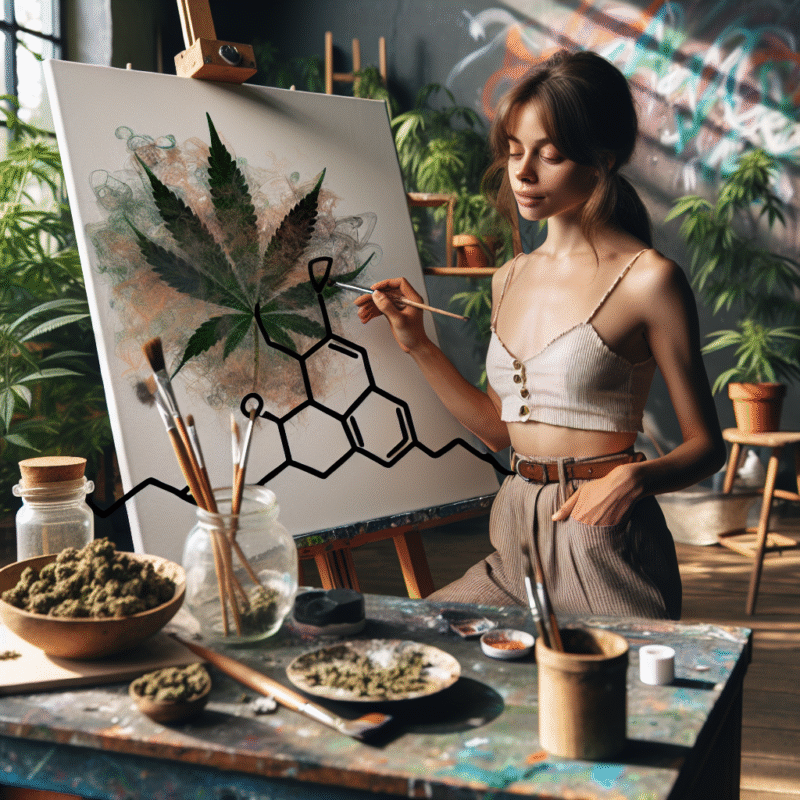Cannabis and Creativity: Exploring the Connection Between THC and Artistic Expression
Introduction
For centuries, cannabis has been intertwined with creativity, innovation, and artistic expression. From the swirling colors of Van Gogh’s paintings to the poetic verses of Bob Dylan, many artists have claimed that the use of cannabis enhances their creative processes. This article delves into the connection between THC, the psychoactive component of cannabis, and its potential effects on creativity.
The Science Behind THC and Creativity
Understanding THC
Tetrahydrocannabinol (THC) is the primary psychoactive compound in cannabis. When consumed, THC interacts with the endocannabinoid system in the brain, specifically targeting the CB1 receptors, which play a role in mood regulation, memory, and perception.
Effects on the Brain
Research into the relationship between THC and creativity reveals that cannabis can alter cognitive function in ways that may promote creative thinking. Some studies suggest that THC may facilitate divergent thinking, a thought process that generates multiple solutions to a problem. This ability to think outside the box and make unconventional connections is often celebrated in artistic endeavors.
The Role of Neurotransmitters
Cannabis use can increase the levels of neurotransmitters like dopamine, which is associated with feelings of pleasure and reward. This elevation can lead to a more relaxed state, allowing artists to explore their thoughts and ideas without the constraints of self-criticism or inhibition. The lowered anxiety can also contribute to a state of flow, where creativity thrives.
Historical Context
Cannabis has long been utilized by artists and thinkers throughout history. The Beat Generation, for instance, embraced cannabis not just for its recreational benefits but as a tool for inspiration and social commentary. Similarly, indigenous cultures have used cannabis in spiritual ceremonies, emphasizing its role in creativity and self-expression.
Anecdotal Evidence from Artists
Many artists, musicians, and writers have shared personal accounts of how cannabis enhances their creative process. Musicians like Jimi Hendrix and the Grateful Dead often attributed their innovative sounds to cannabis, citing its ability to alter their perception of music and creativity. Writers, too, from William S. Burroughs to Jack Kerouac, have acknowledged the influence of cannabis on their literary works.
Examining the Risks
While many individuals report enhanced creativity with cannabis use, it’s important to note that the effects can vary widely. For some, THC may lead to increased anxiety, paranoia, or cognitive impairment, which can stifle creativity rather than enhance it.
The Dose Effect
The relationship between cannabis and creativity may also depend on dosage. Low to moderate doses of THC are often associated with enhanced creativity, while high doses can lead to feelings of confusion or overwhelm, hindering creative output.
The Role of Environment
The effects of cannabis on creativity can also be significantly influenced by the environment. A comfortable, inspiring space can amplify THC’s potential benefits, while a distracting or stressful environment may negate them. Social settings may enhance creativity for some, while solitude may be more beneficial for others.
Conclusion
The connection between THC and creativity is complex and multifaceted. While many artists and researchers believe that cannabis can enhance artistic expression, individual experiences can vary widely. As we continue to explore the neuroscience of creativity and the effects of cannabis, it becomes increasingly important to understand both the potential benefits and risks associated with its use.
In the end, whether cannabis serves as a muse or a distraction often hinges on the individual’s unique circumstances, experiences, and environment. As society progresses towards more open attitudes towards cannabis, its role in the creative landscape may continue to evolve, providing new opportunities for artists and thinkers alike.

